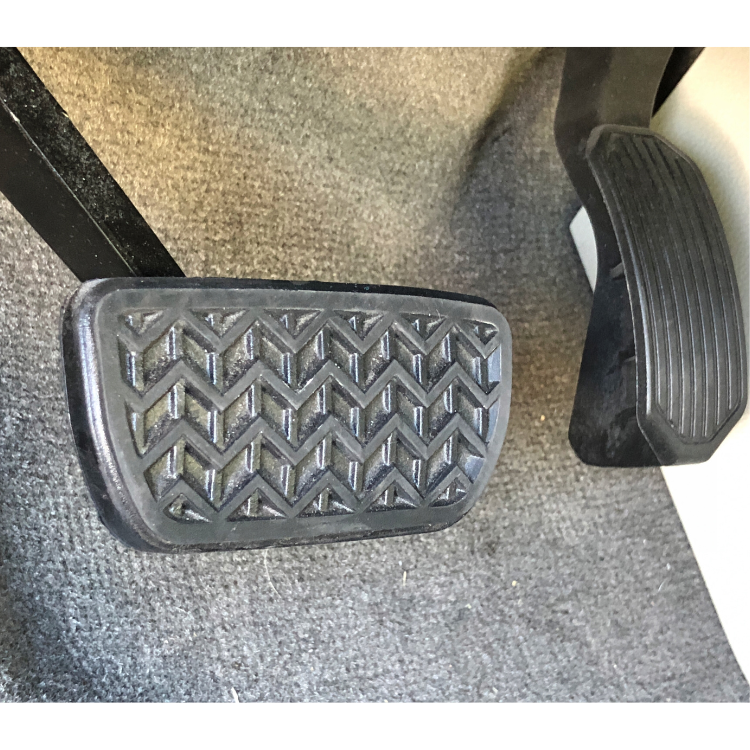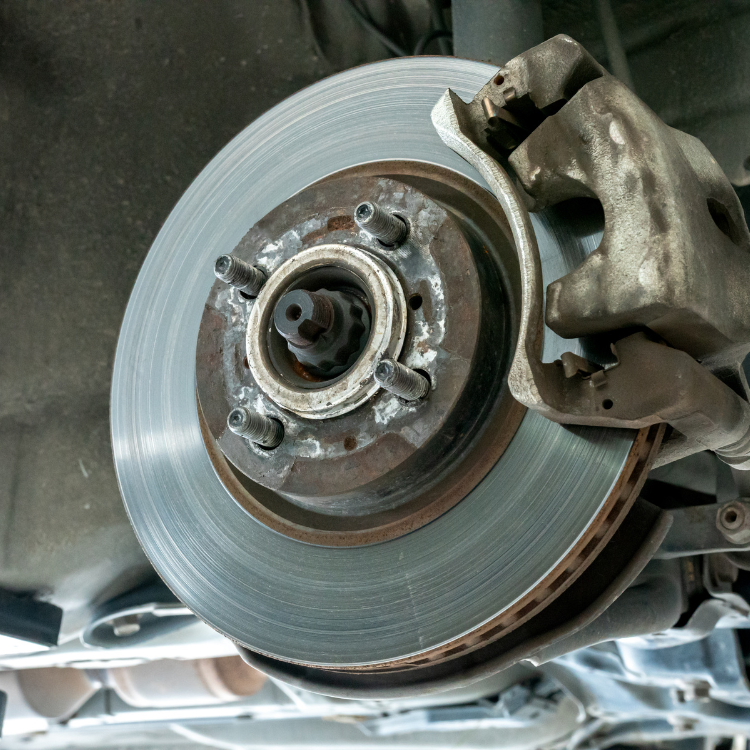In this helpful blog post, we will talk about when to replace brake pads on your car. Just like warmer weather and sunnier days signal the arrival of spring, there are also going to be tell-tale signs that your car’s brake pads need replacing.
Imagine you’re cruising down the highway when you hear a high-pitched screech every time you apply the brakes, or perhaps you’ve noticed an unusual vibration that wasn’t there before. Are these signs of worn-out brake pads or something more severe?

Image Source: Canva Pro
When To Replace Brake Pads On Your Car
Let’s dissect the symptoms together, so you’ll know when it’s time to give those brakes some attention and when to replace brake pads on your car.
Understanding Your Brake System
To fully grasp when you need to replace your car’s brake pads, it’s important to understand how your brake system functions. Your car’s brake system is a complex arrangement of mechanical, hydraulic, and electronic components working in harmony to keep you safe on the road.
When you press the brake pedal, it leverages a piston in your car’s master cylinder, forcing brake fluid through the brake lines to the calipers. This hydraulic pressure causes the calipers to clamp the brake pads onto the rotor, creating friction that slows your car down.
Now, your brake pads are a critical part of this process. They’re the points of contact with the rotors, bearing the brunt of the friction and heat generated when you brake.
Over time, this relentless friction causes your brake pads to wear down, and they can’t do their job effectively. This wear is normal, but it’s important to watch for signs that they’re wearing too thin.
Neglecting to replace worn-out brake pads can lead to more expensive repairs later on, and more importantly, it can compromise your safety. Knowing how your brake system works helps you understand why regular brake pad maintenance is so important.

Image Source: Canva Pro
Sign 1: Unusual Noises
Listen carefully for any unusual noises when you’re driving, as these can be one of the first signs that your brake pads need replacing.
The sound of worn-out brake pads is often described as a high-pitched squeal, resulting from the wear indicator scraping against the rotor. This noise becomes more prominent when you apply the brakes, so it’s important not to ignore it.
There are, however, other sounds to be aware of, including:
- A grinding noise, suggesting the brake pads are completely worn out and metal is rubbing against metal.
- A clicking noise could indicate that the brake pads are loose.
- Rumbling or vibrating sounds, are indicative of possible rotor distortion.
Sign 2: Warning Lights
Moving beyond noises, signs you need to replace car brake pads might need replacing is the illumination of warning lights on your vehicle’s dashboard.
Modern vehicles come equipped with a brake warning light, designed to alert you when there’s an issue with your braking system.
This light is linked to sensors that detect wear on your brake pads. When the pads wear down to a certain point, the sensors activate, triggering the warning light.
Now, it’s important to understand that this light doesn’t always mean your brake pads are shot. It could also indicate a problem with your brake fluid or other components of the braking system. However, if this light illuminates, it’s a strong signal that you should have your brakes checked out as soon as possible.
Don’t ignore this warning light. Neglecting it can lead to serious safety issues. If the brake light comes on and stays on, it’s not just a suggestion, it’s a demand.
Your vehicle is telling you that something isn’t right, and you need to take action. So, make sure to schedule a brake inspection promptly when you see this light.
Sign 3: Poor Brake Response
Another telltale sign that your brake pads may be due for replacement is a noticeable decrease in your car’s brake response.
You’re driving along and you notice that it’s taking longer for your vehicle to stop, or the brake pedal is sinking too close to the floorboard. This is a clear sign that your brake pads are worn out and need to be replaced.
When you’re evaluating your car’s brake response, pay close attention to these three key factors:
- Pedal Feel: The pedal should feel firm and responsive. If it’s soft or spongy, that’s a sign of worn brake pads.
- Stopping Distance: If you’re needing to apply more pressure to achieve the same stopping distance, your brake pads are likely wearing thin.
- Brake Noise: Listen for any unusual sounds when you brake. Grinding or squeaking can be a sign of metal-on-metal contact, signaling a dire need for new brake pads.
Ignoring poor brake response can lead to dangerous situations on the road. So, don’t delay. If you’re noticing these signs, get your car’s brake pads checked and replaced as soon as possible.
Sign 4: Vibrations During Braking
While you’re paying attention to your car’s brake response, you might also notice a distinct vibration when you apply the brakes.
This could be a clear sign that your brake pads need a replacement. It’s not something you should ignore or simply write off as an inconvenience.
Vibrations during braking usually indicate that your brake pads are worn unevenly. This uneven wear can cause your brake rotor, which is a disc that your brake pads clamp onto to slow your car, to also wear unevenly. When this happens, you’ll feel a pulsating sensation through your brake pedal.
However, it’s important you don’t confuse this with the anti-lock braking system (ABS) kicking in. The ABS can cause a similar vibrating feeling, but it will only occur during sudden or aggressive braking.
If you’re consistently experiencing vibrations while braking, it’s time to get your brake pads checked by a professional. They’ll be able to determine the level of wear and tear and recommend if a replacement is necessary.
Don’t postpone this, as this is a safety issue that needs immediate attention. Your car’s brakes are essential to your safety and others’ safety on the road.
Sign 5: Physical Wear and Tear
Beyond the audible and tactile signs, a visible inspection of your brake pads can reveal significant physical wear and tear that necessitates immediate replacement.
Here’s the nitty-gritty: healthy brake pads are typically about 1/4 inch thick. If yours are less than this, it’s time to contemplate a replacement.
You’ll want to check for these three primary signs of physical wear and tear:
- Cracks or Grooves: These can decrease the surface area of the brake pad that comes in contact with the rotor, reducing your car’s stopping power.
- Glazing: This occurs when the brake pad gets so hot that its resins crystallize, making the surface glossy and less effective at stopping the vehicle.
- Uneven Wear: This might suggest that your brake calipers aren’t applying pressure evenly.
While you can inspect your brake pads yourself, it’s always wise to have a professional mechanic look at them, too. They’re trained to spot subtle signs of wear that you might miss. Don’t disregard physical wear and tear—it’s a surefire sign that your brake pads are on their last leg and need replacing.
Have you had to change your brake pads before or do you go in and get them done? Let me know in the comments below and also feel free to add any tips and tricks you may have.